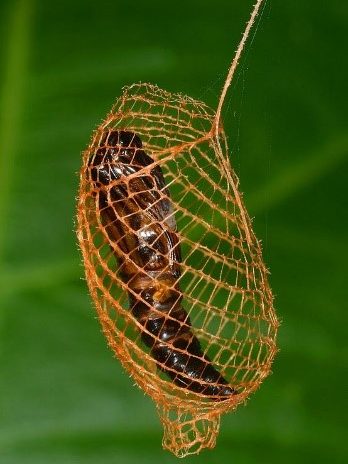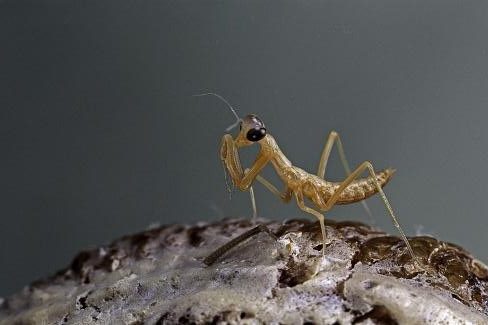
Like us humans, insects experience a metamorphosis (transformation) and grow up to have credit cards and pay school fees and shop for sneakers online… But not all insects go through a complete metamorphosis.
The butterfly – and its other winged friends (ladybeetles, flies, mosquitoes, caddisflies) – experience the super deluxe package. When baby butterflies (juveniles) hatch, they look nothing like their parents (which let’s face it, is great if you get a dud). The juvies cycle through a series of moults, which is when they shed their old skin and get bigger and bigger. And because they’re hungry and lazy and never clean their goddamn rooms, they sometimes eat their old skins. Yuk!
Time flies, (that pun I totally intended), and the juvies turn into a pupa (say that three times real fast). The cells inside the pupa are leggo building champs. They completely rearrange themselves and build a new creature, with wings (the flying apparatuses), and become an adult insect.

When it comes to butterflies (quite possibly the most exquisite insect out there) words like “cocoon”, “pupa” (say it again three times real fast) and “chrysalis”, are thrown around like french fries to a flock of seagulls at the beach. But these words are individuals and have earned your respect!
Pupa (plural pupae, which is only fun to say with a French accent, go on, try it) is the stage between a larva (think caterpillar) and an adult (think the aforementioned exquisite insect).

Some pupae have a cocoon, which is like an all-weather purpose coat (something that I should invest in and save myself closet space). Take your average silkworm, they work their little tushies off by making silk cocoons. Each cocoon is carefully constructed from a single thread. You know that collection of silk ties you got stuffed at the back of your wardrobe because you quit your office job and are now a freelancer who works in jeans and t-shirts? (oh, just me?)
Those ties of yours, are made from thousands of carefully, unwound cocoons.
Butterflies rarely make cocoons (they got better things to do with their time like being all beautiful and stuff). Their pupa, which we butterfly nerds (and you can too) call a chrysalis, is usually ‘naked’ and protected only by a tough outer skin. So a chrysalis is simply a naked (cocoonless) pupa.
There are way more steps involved in a complete metamorphosis, and I’d tell you all of them but there’s a friendly cockroach crawling across my desk yelling in its angry customer voice, “what about me?!”. The little guy belongs to the group of insects who got jibbed and goes through an incomplete metamorphosis.
Take a cute little praying mantis, (yeah I said cute, because I’m not superficial like that), as soon as they hatch, they start hunting other critters. No ordering from the kids’ menu for these bad boys. Insects like the dragonfly or the cricket or the earwig, they go from baby to adult with no real change except size. And that means competing with their not-so-cute veracious parents.

This is where the hassle of the complete metamorphosis pays off for butterflies and their properly transforming buddies. The adults and juvies don’t just look completely differently, they eat different foods (the next story is all about food) and hide in different places. And that means they don’t compete with each other like the poor lot with incomplete metamorphosis.
Now that we’re all friends, let me tell you what these insects who go through complete and incomplete metamorphosis have in common. It’s just two things, so easy to remember. One, they all lay eggs. Two, they all become winged adults. Three… just kidding.
Oh, and the transformation ain’t necessarily slow. While you’re busy lathering u the sun-tan oil, fruit flies and mosquitos go through a whole magical, life-cycle in a matter of days.
And if you want some technical jargon, here it is.
The complete metamorphosis is called holometabolism, while incomplete metamorphosis is called hemimetabolism. The groups of insects who go through holometabolism (mind you, they do it kicking and screaming), are called holometabolous insects. The rest, are hemimetabolous.
So now that know your holomos from your hemis and you’ll be… hella smart.
If it’s still clear as mud, follow this link for a brief explanatio n about the butterfly’s life cycle
QUICK LINKS
CONTACT US
Address: PO Box 2442, Caulfield Junction, VIC 3161
Email: info@butterflyadventures.com.au
Coppyright © 2020 Butterfly Adventures. All Rights Reserved.